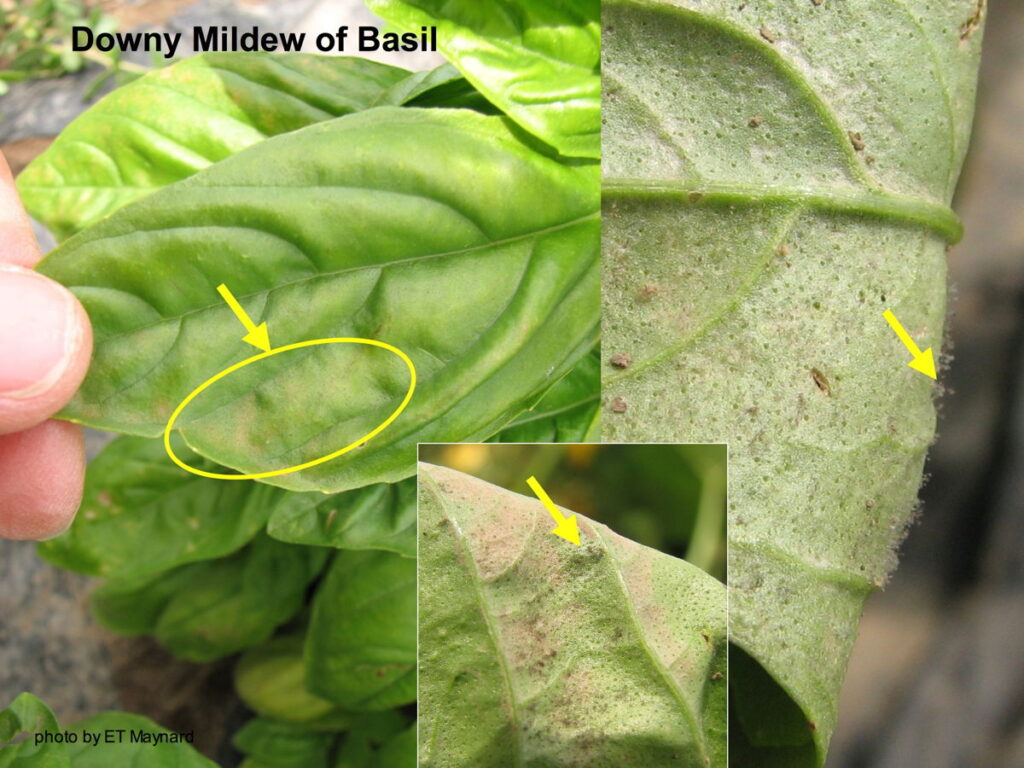This disease has been observed in northern Indiana on basil sold as a fresh herb. The fungus that causes downy mildew of basil does not overwinter in Indiana; instead, it must blow in from the south. The fungus that causes downy mildew of basil is not the same fungus that causes downy mildew of cucurbits or soybeans. Leaves may turn a yellow color that is restricted by veins. Brown areas may develop in severe cases of infection. Close examination of the underside of the leaf under moist conditions may reveal a gray ‘fuzz’ which is the spores of the causal fungus. Such leaves may not be marketable. Since the fungus that causes downy mildew of basil does not overwinter in Indiana, fall tillage and crop rotation, although a good idea, won’t help manage this disease. Pruning plants so that leaves dry out sooner may help reduce the amount of infection (many growers may want to prune plants to avoid flowering anyway). Varieties of sweet basil tend to be more susceptible to downy mildew than more exotic varieties. Organic materials that may be used to control downy mildew of basil include Actinovate®, Double Nickel®, Milstop®, and Regalia®. Conventional products include: Ranman®, Revus®, Quadris®, Armicarb®, and phosphorus acid products.
